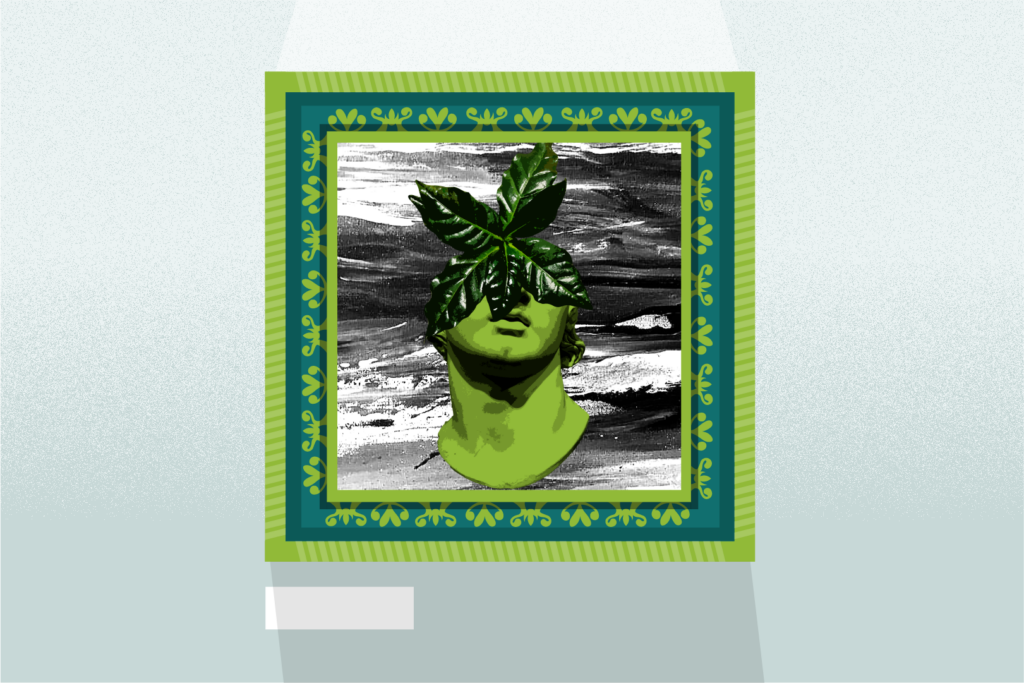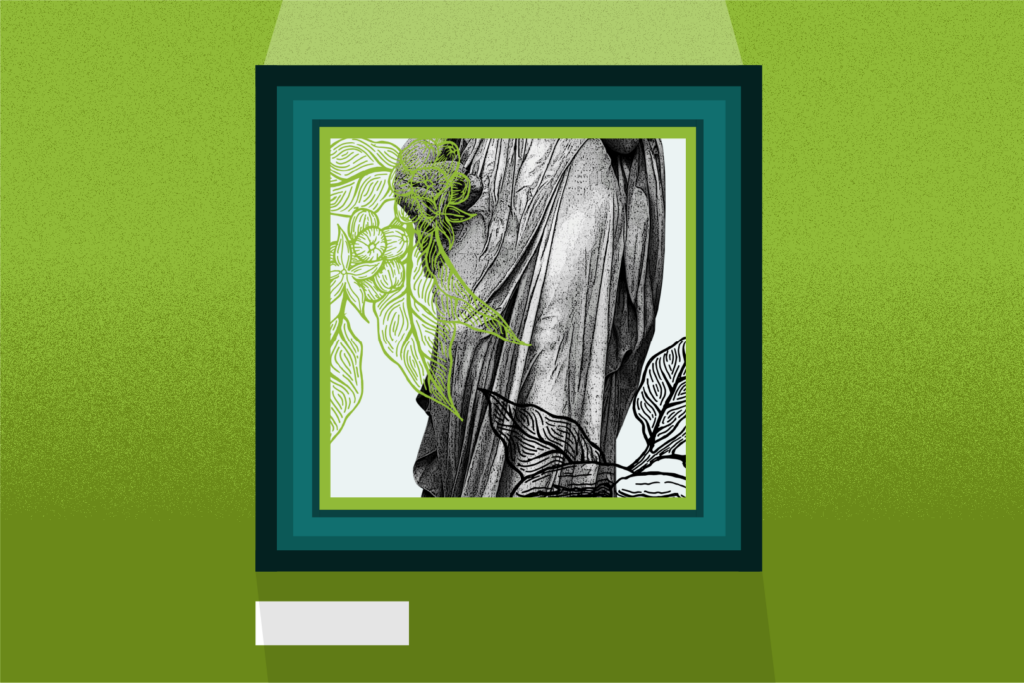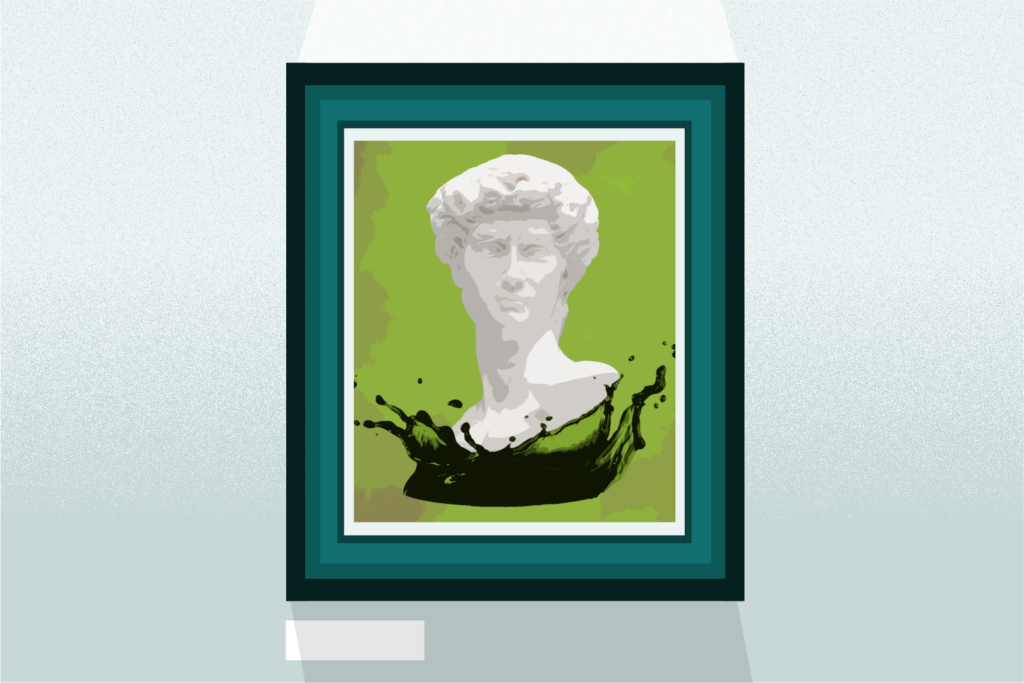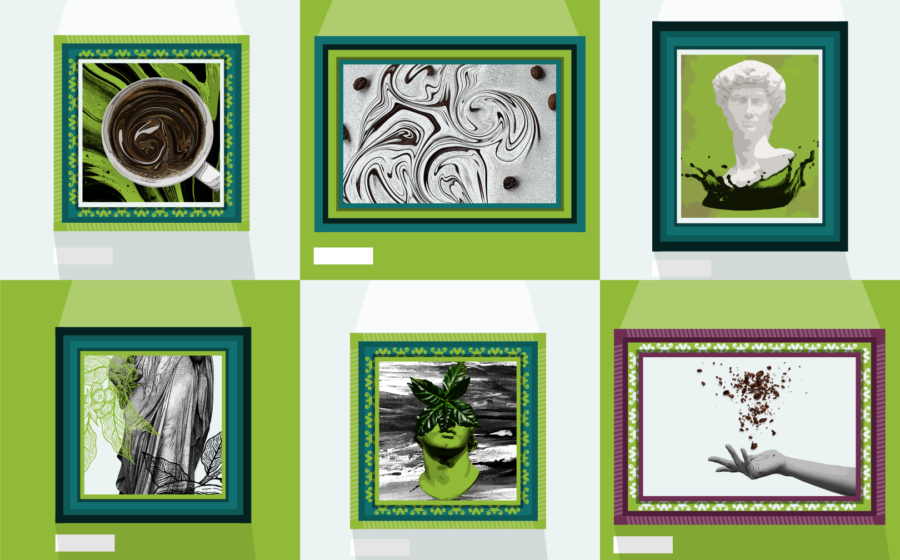For centuries, coffee has fueled artists to work, create, and get through their daily lives. Across history, coffee has popped up in monuments, sculptures, paintings, and even operas—Johann Sebastian Bach memorialized his affection for the caffeinated beverage in a 1732 opera aptly titled The Coffee Cantata.
Although serving as a tool for many artists, some have elevated coffee beyond its humble, utilitarian status, immortalizing it as part of famous works of art. With its entrance into the art world, coffee proves to be endlessly adaptable, fitting into unexpected and surprising areas of human life.
Presidential Coffee
Sometimes, coffee appears in unexpected places, like statues commemorating past presidents.
Before William McKinley was elected President of the United States, he served in the Civil War for the Union Army. In fact, his war service was a big part of his 1896 presidential campaign (so was his commitment to disconcerting imperialistic practices), where he ran against noted orator William Jennings Bryan. The 25th President, who worked in the commissary, worked to ensure that Union troops had enough to eat and drink. Despite not fighting in battle, his job did carry risk: wagons of supplies were occasionally robbed and often shot at.

On September 17, 1862, the Battle of Antietam began, remembered as the single bloodiest day in American military history with over 22,717 estimated casualties. That morning, McKinley, who was 19, heard that his troops didn’t have enough food to eat or coffee to drink. Under fire, he drove a wagon carrying carafes of coffee mid-battle, relieving exhausted soldiers.
Soldiers imbued the coffee they drank with a lot of meaning, which became part of McKinley’s campaign. A soldier wrote that it was their “chiefest bodily consolation.” Another soldier, who survived his injuries despite a poor prognosis, wrote home, “What keeps me alive must be the coffee.”
Today, McKinley is sometimes colloquially referred to as “The Coffee President.” His coffee run is immortalized in the Monument to William McKinley at Antietam in Maryland. The monument tells the story of his famous coffee delivery and features a bas-relief depicting a young McKinley delivering coffee to lined-up troops, his wagon safely behind the line of soldiers. One soldier turns to him with gratitude, a sign of this delivery’s importance.
Commemorating San Francisco’s Coffee History
In Hills Bros. Plaza in San Francisco stands a bronze sculpture of a man wearing a turban and robes joyously drinking a cup of coffee—he’s known only as the Taster. Erected in 1992 by sculptor Spero Anargyros, the statue commemorates an old Hills Bros. logo, a coffee brand that dominated the area for most of the 19th century.
Before San Francisco became a hub of modern specialty coffee, Hills Bros. was a coffee giant, working out of the Embarcadero, a water-front boulevard in San Francisco where many businesses and famous tourist sites remain. According to a 1945 video about San Francisco’s early history called “The March of Progress,” their roasting facilities made the neighborhood smell like coffee around the clock.

The Taster was the corporate mascot of Hill Bros. for nearly a century, appearing in 1900 after the company invented a technology to vacuum-seal their cans. The technology, which helped preserve freshness, made Hills Bros. a household name—a placard on the statue reads that the Taster is a “lasting symbol of coffee quality.”
Decades later, the statue would stand out to Mokhtar Alkhanshali, then a doorman working a block away from Hills Bros. Plaza. In the book “The Monk of Mokha,” author Dave Eggers tells the story of Alkhanshali, founder of Port of Mokha, a coffee company that promotes coffees from Yemen. Long before he started the company, the statue would come to represent a significant turning point in Alkhanshali’s life.
Alkhanshali found out about the statue from a friend. Eggers writes: “Miriam texted one day. ‘You ever look across the street?’ she asked. Mokhtar didn’t know what she was talking about. ‘Across the street there’s a statue of a Yemeni dude drinking a big cup of coffee,’ she told him.”
The sculpture was inspiring for Alkhanshali. He told reporter Monica Campbell that the statue “sparked this interest in me and I just started researching more and I found all these ridiculous connections … Yemen being this amazing place [where] coffee was first brewed.” The statue helped drive his journey into Yemeni coffee, one that has been well-chronicled: in 2015, with a suitcase full of Yemeni coffee ready to bring back to the United States, Alkhanshali fled Yemen by speedboat as civil war broke out. Outlets all over the world covered Alkhanshali’s harrowing escape; the story serves as one of the central plot points in Eggers’ book.
In 1990, Hills Bros. replaced the logo featuring the Taster, and the brand closed its iconic Embarcadero office in 1997. But the Taster still stands, a reminder of the city’s coffee history.
When Coffee Becomes Contemporary (Art)
Coffee in art doesn’t just show up to commemorate historical moments. In 1995, artist Ken Nyberg created an 11-foot tall statue of a coffee cup pouring coffee onto the ground outside of Big Foot Gas & Grocery in Vining, Minnesota. The sculpture is a community favorite, but it’s also a can’t miss spot for tourists—lots of folks on long, winding trips through the Midwest, end up stopping (who wouldn’t?) and snapping a photo with the piece. Though stopping for coffee is always a popular way to rest and stretch on long drives, Nyberg’s sculpture gives another meaning to the phrase “coffee break.”
Nyberg’s is not the only larger-than-life coffee sculpture to dot the North American landscape. In Davidson, Saskatchewan, Canada, a giant coffee pot looks perfectly perched to pour you a hot cup of joe. The coffee pot—which looks vaguely like a mix between a Moka pot and a French press—sits outside a roadside picnic spot and is rumored to hold enough coffee to fill 150,000 cups.

At 24 feet tall, the pot is painted with scenes of Canadian pastimes and imagery, like the flag Saskatchewan and a Canadian goose. The sculpture is considered a symbol of the friendly town, but who actually built the sculpture seems to be lost to history.
Part of the modern art movement has been a celebration of non-traditional materials to make art—from elephant dung to bubblegum. Coffee, in all its forms, has been part of that artistic exploration. Brewed coffee can be used as a wash to age paper (and, negatively, to forge documents), while coffee grounds can be mixed with paint to create texture in a piece.
For example, Angel Sarkela-Saur and Andrew Saur have branded themselves as The Coffee Artists, using coffee as a medium to paint. While generations of artists have used coffee washes to add a light sepia tone to their work, Saur and Sarkela-Saur have debuted even darker hues made with coffee. Their innovation has made them the subject of a short documentary and the center of a thriving artistic business.
In Nigeria, artist Ekene Ngige “had an accidental eureka moment” when he spilled a cappuccino on his notepad. He began mixing instant coffee with water to create a thick substance he could paint with. Ngige paints realistic portraits of people with coffee; he also makes artwork using more traditional mediums.
Some artists use lattes as their canvas, taking their creations a step (or two or twenty) above traditional latte art. In 2017, Lee Gang-bin, then co-owner of Café C.THROUGH in South Korea, went viral with his latte art, using coffee drinks as a canvas to create pieces featuring famous works of art like Vincent van Gogh’s The Starry Night (he also makes art inspired by Disney movies and then of course, there’s this latte with a rendering of Batman villain, The Joker). The drinks require at least an hour of work each, so patrons have to reserve a spot to get one of his creations; Gang-bin only made three a day at the height of the drink’s popularity.
Others have picked up the drinkable art mantle since, including Brian Leonard, who made latte art portraits of John Legend and Olivia Colman before turning his talents to more famous works of art: Leonard’s Foama Lisa remains a hit on Instagram.
While we might all find a smile in a well-executed rosetta or tulip in a flat white, for some, coffee inspires creation. Throughout history, coffee has compelled people to act, to explore, and to take risks—with some of those moments forever memorialized in paintings, statues, and structures. The pleasure of a cup of coffee is often fleeting, dissipating after a sip or until something else distracts us; in art, coffee lasts forever, and we can commemorate not just the beverage, but the shared experiences and memories coffee helps us create.















